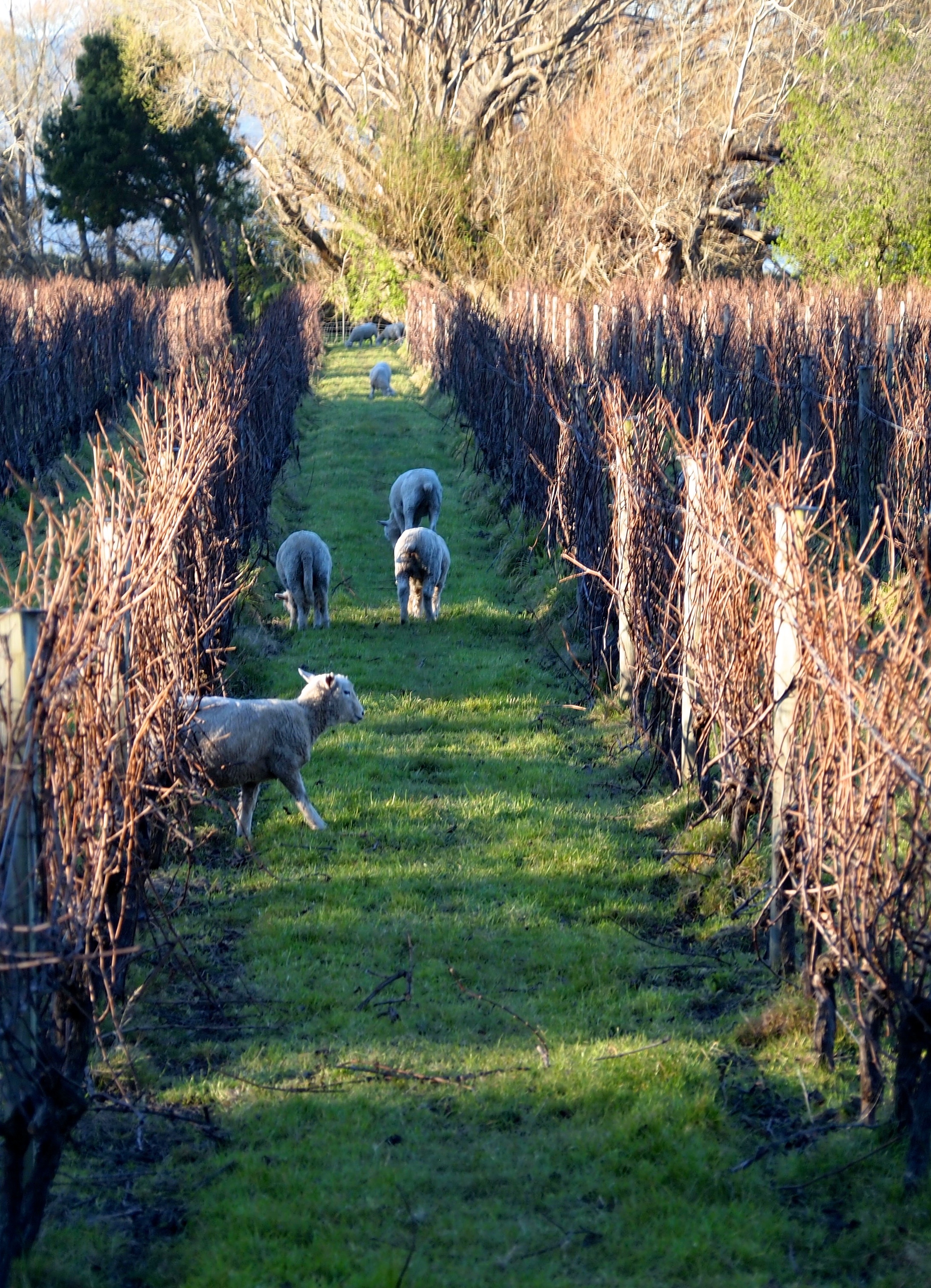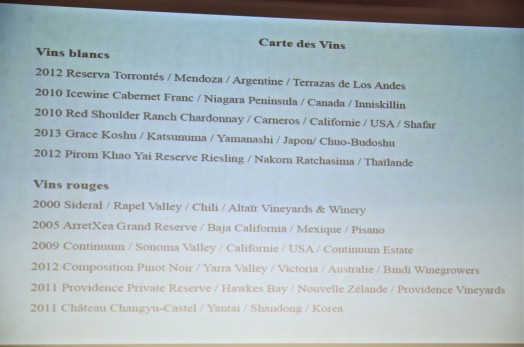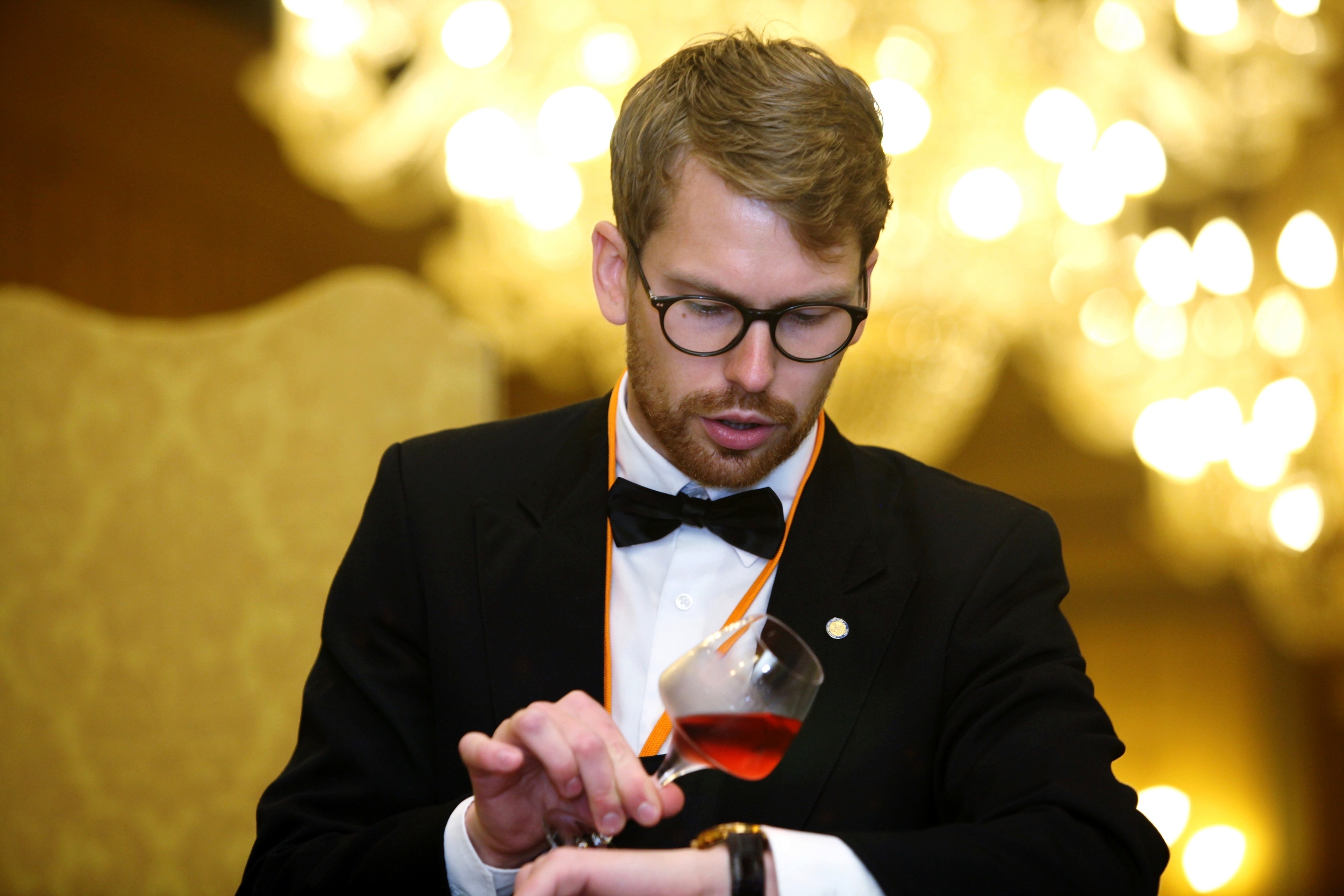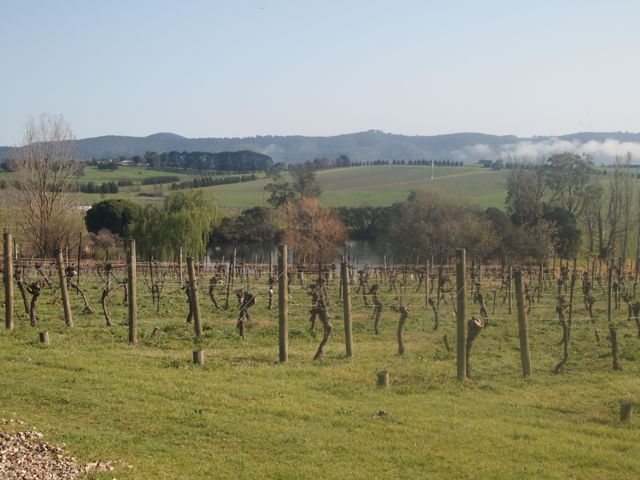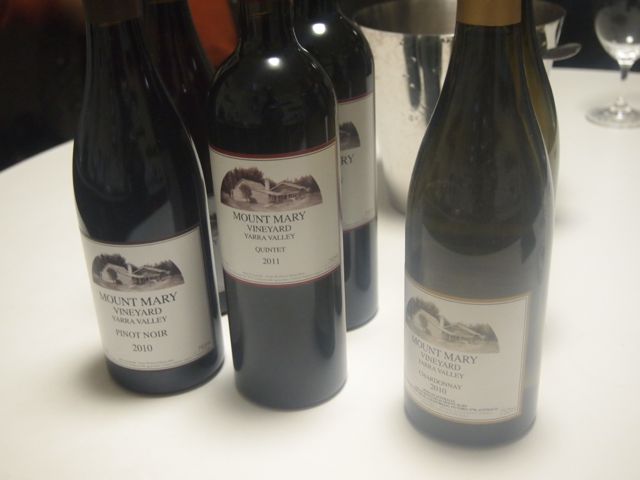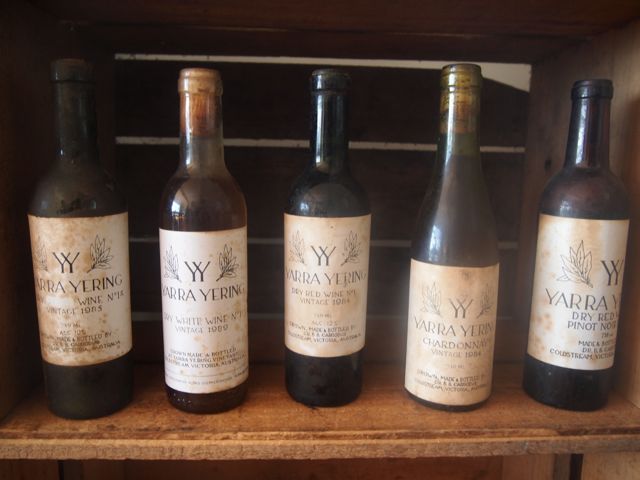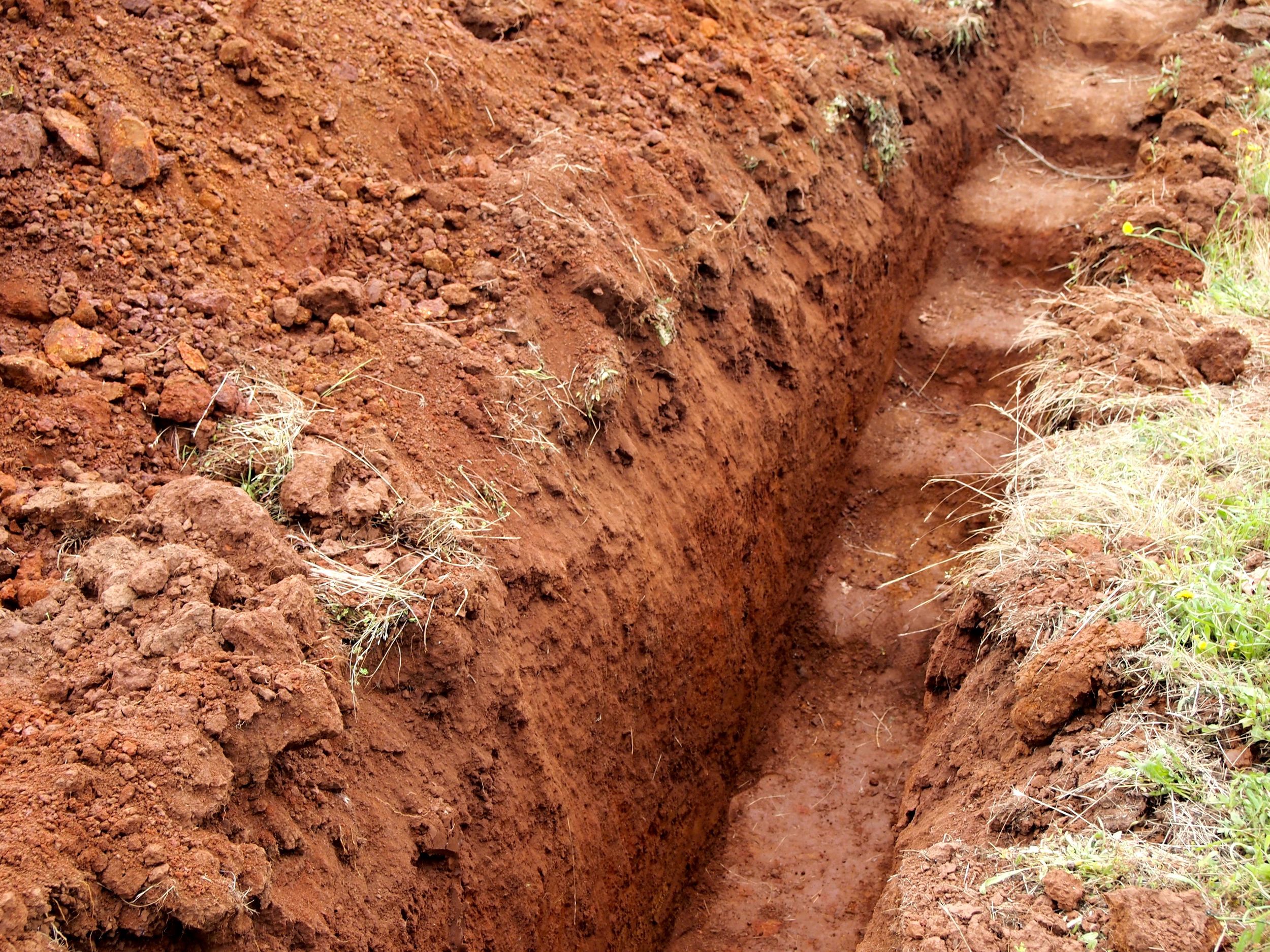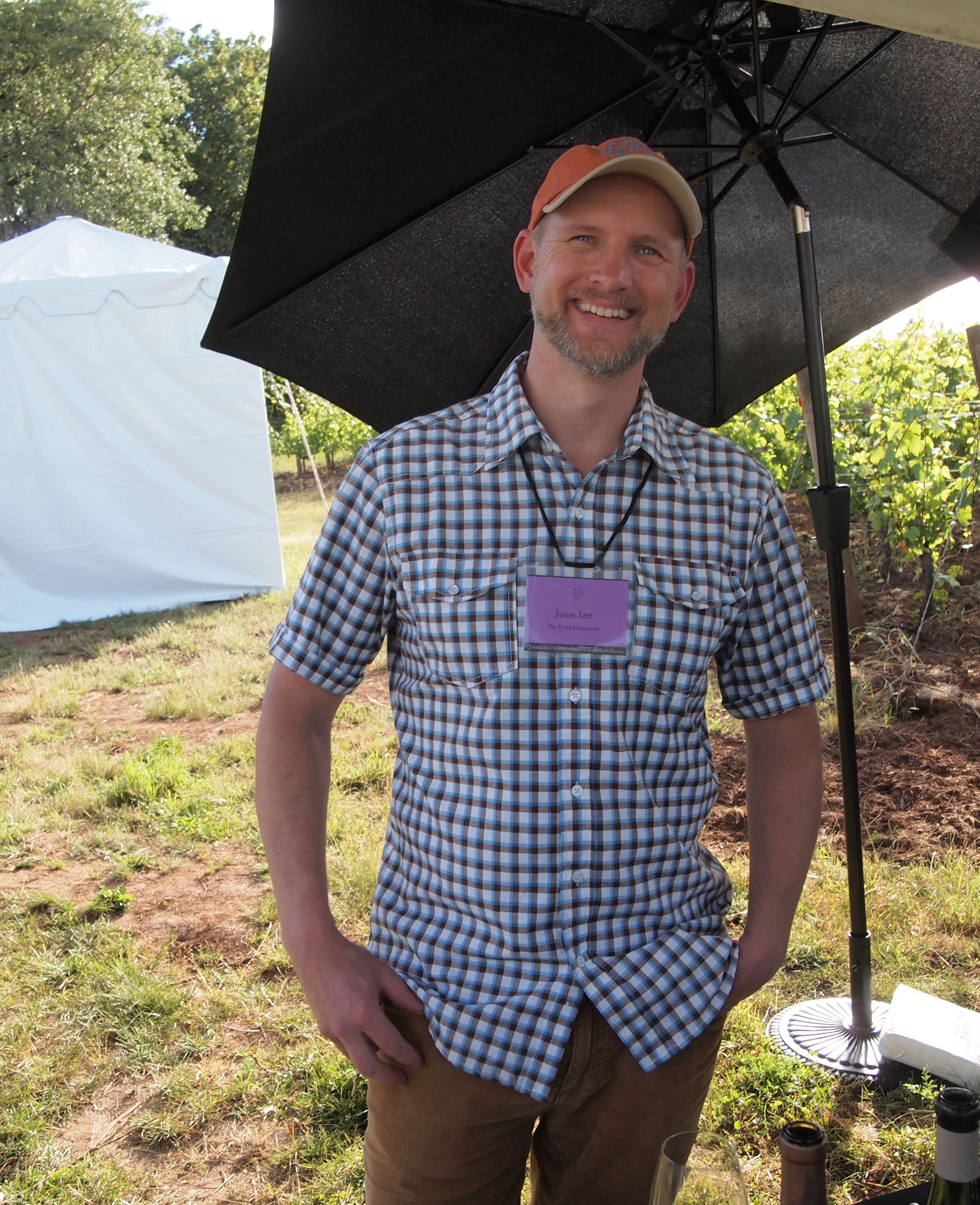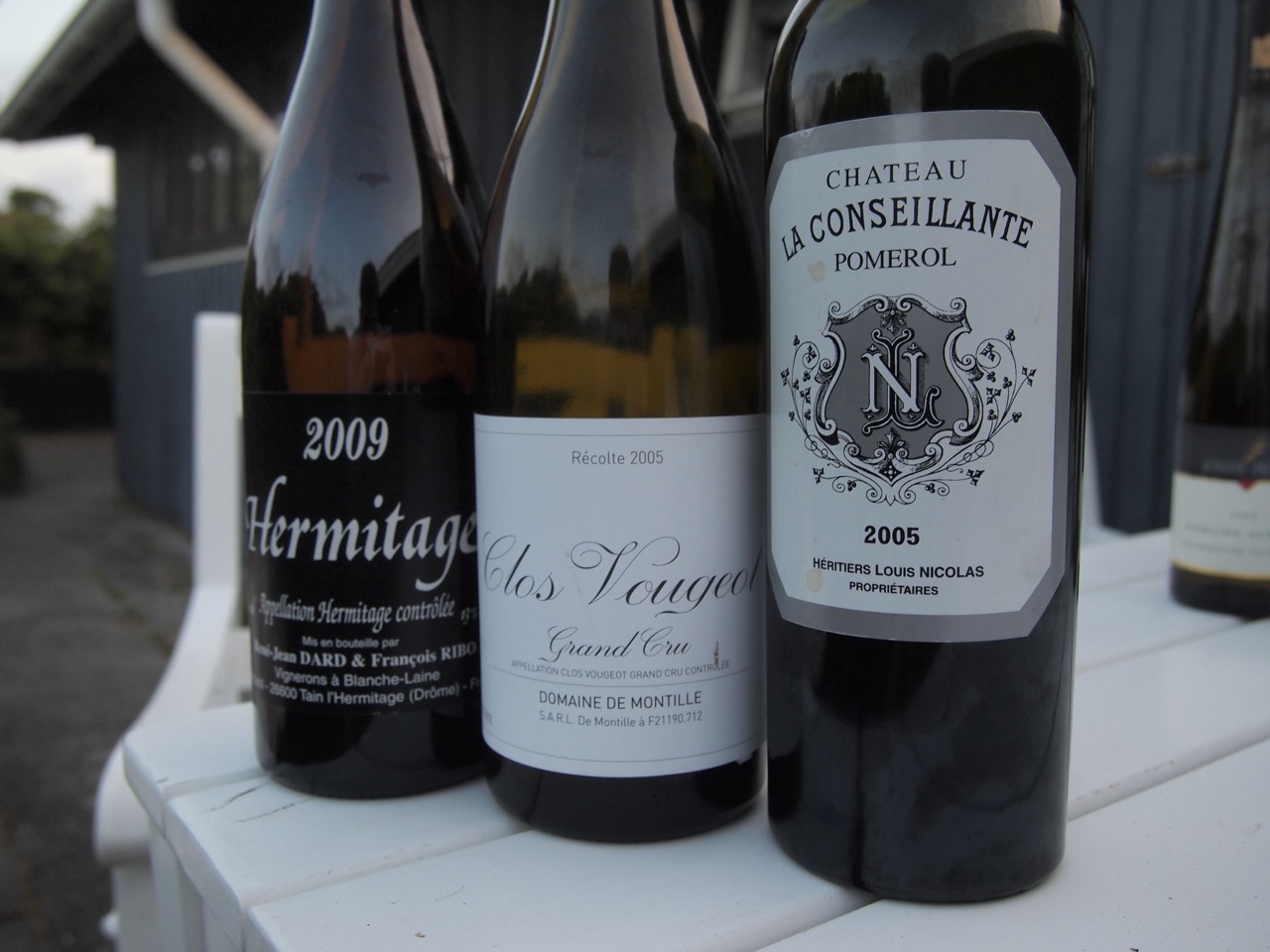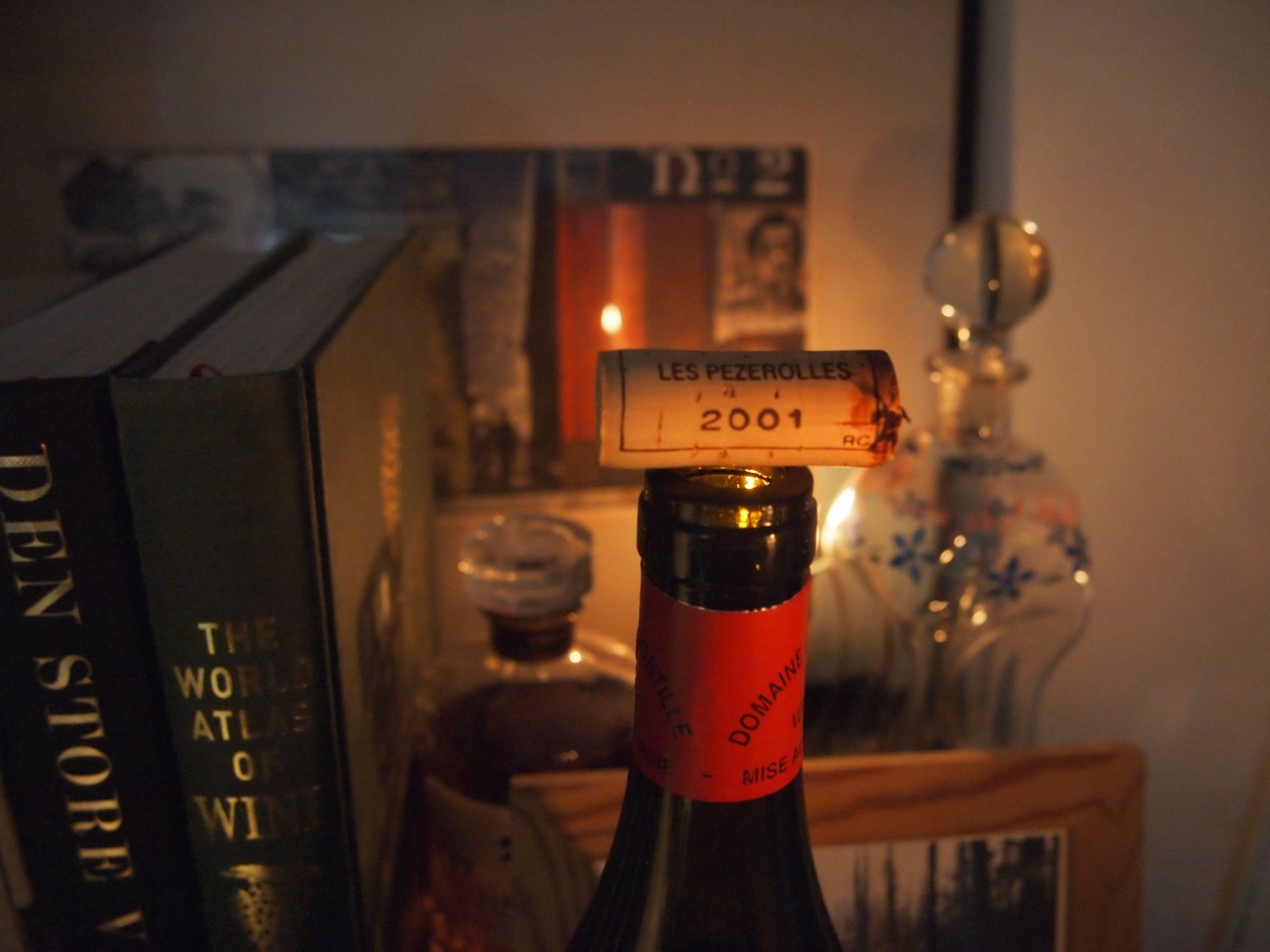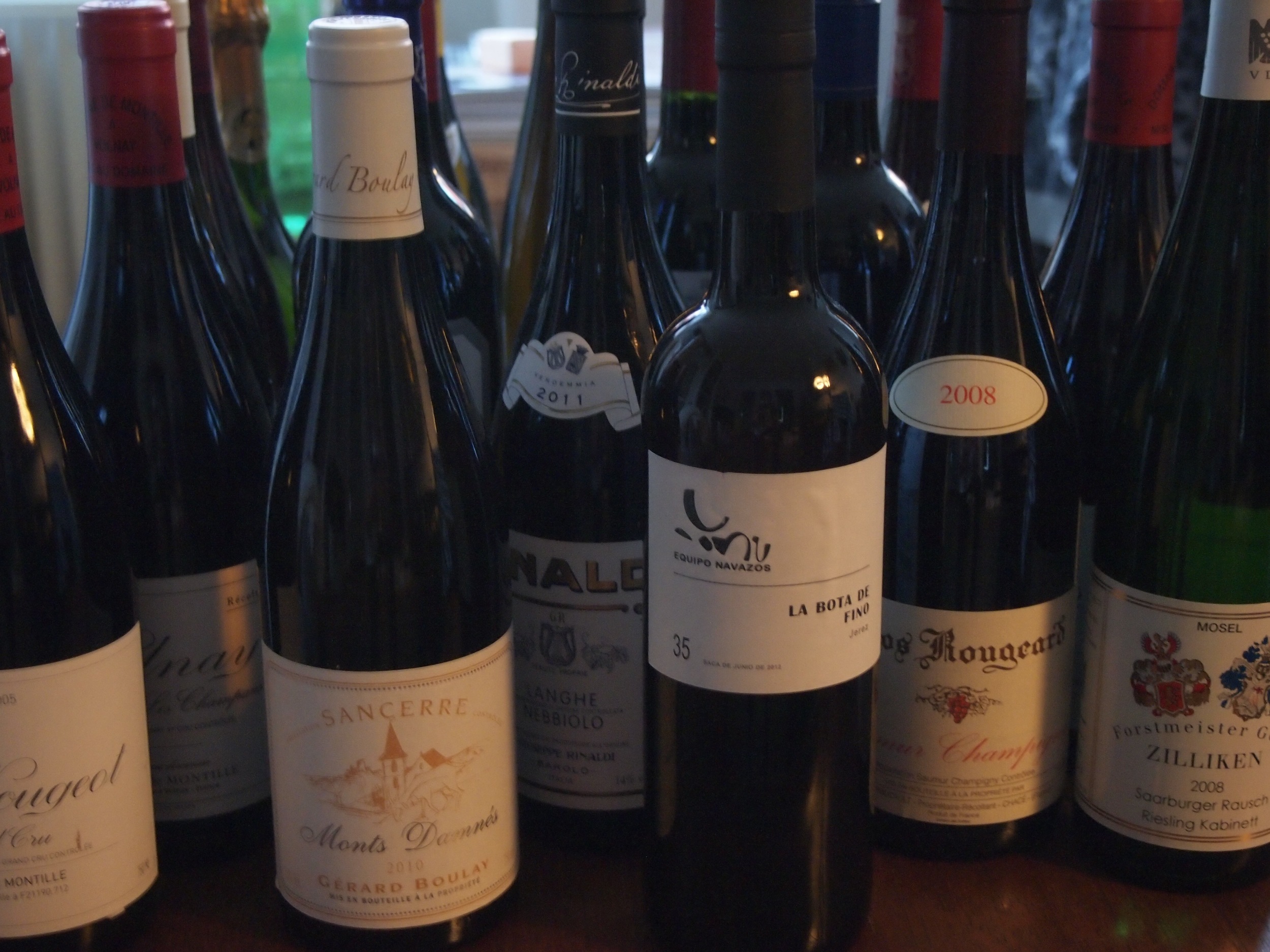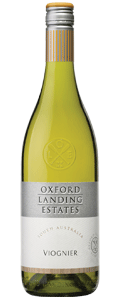If there is one Galician wine that has managed to gain a real foothold in the world of wine, it is Rías Baixas. Clean, easily affordable and hugely drinkable wines based on the Albariño grape combined with clever marketing has propelled it to the forefront of Spanish winemaking in a relatively short time. Rías Baixas won its glory in the end of the last century, at a time when it was a one-off in Spanish wine, making fresh, modern style white wine to match the revolution that was taking place with red wine making elsewhere in the country, and fit well with the boom of the culinary scene.
It was the Spanish white wine, and in many ways still is. I certainly found some spectacular and interesting wines here, but left full of questions: Is Rías Baixas being passed by more interesting regions? Was it a mistake to associate so heavily with one grape? What is the future of a region that seems to have reached its maximum quality potential?
Rías Baixas means the lower estuaries (for the sommelier students: these are Arousa, Pontevedra and Vigo) of the lazy rivers that creep through Galicia and meet the Atlantic ocean. It is subdivided into five sub-regions of which the most important is Val do Salnés. Most of the vineyards lie fairly close to the ocean and none can escape the influences it brings with cold winds and plenty of rain, making the scenery green and lush. It also makes it particularly hard to work without fungicides here, and almost no one works organically.
To add to the winegrower’s hardship, vineyards are heavily fragmented, as the old inheritance laws mandated splitting of vineyards between children. Most of the vines are trained en parral, high pergolas that act as fence posts around small farmsteads. Quality focused producers these days train their vines lower and in much higher density, seeking plots that are more resistant to fungal pressure. But some old vineyards (and by old, we’re talking upwards of 200 years!) are very highly regarded and turn out some impressive wine.
There are several grapes allowed in the area, both white and red, although Albariño completely dominates the others, covering 96% of the vineyard area. In the subregion O Rosal, close to the border with Portugal and the Minho/Vinho Verde region, white Loureiro (there is also a red version but it is even more rare) plays an important role and in Condado do Tea, further inland, red grapes like Caiño Tinto and the rich, white Treixadura excel.
According to the wonderful tome Wine Grapes (http://winegrapes.org/about-the-book/ - a must have for all wine nerds) the greatest genetic variation of Albariño is observed in Minho in Portugal where it is known as Alvarinho, thus making it likely to have originated here. For long people have drawn associations between the flavor of Albariño and Riesling, speculating that there is truly noble blood in Albariño’s ancestry, but this has proven false with DNA testing. And I don’t find the two particularly alike. Albariño is much richer, glyceric (which imparts a sense of sweetness and body not related to sugar) and lower in acidity. It relates much more easily to Grüner Veltliner in my opinon.
Visits and tasting
We started out with a quick seminar and a tasting at the imposing Consejo Regulador of Rias Baixas. Although some of the wines were certainly good and the tasting well organized, there is no story to tell here. The best of the wines tasted are included in the short tasting notes below and I’ve left out those that did not move me. I try to be concise and in these, and not delve to far into “fruit salad”-descriptors.
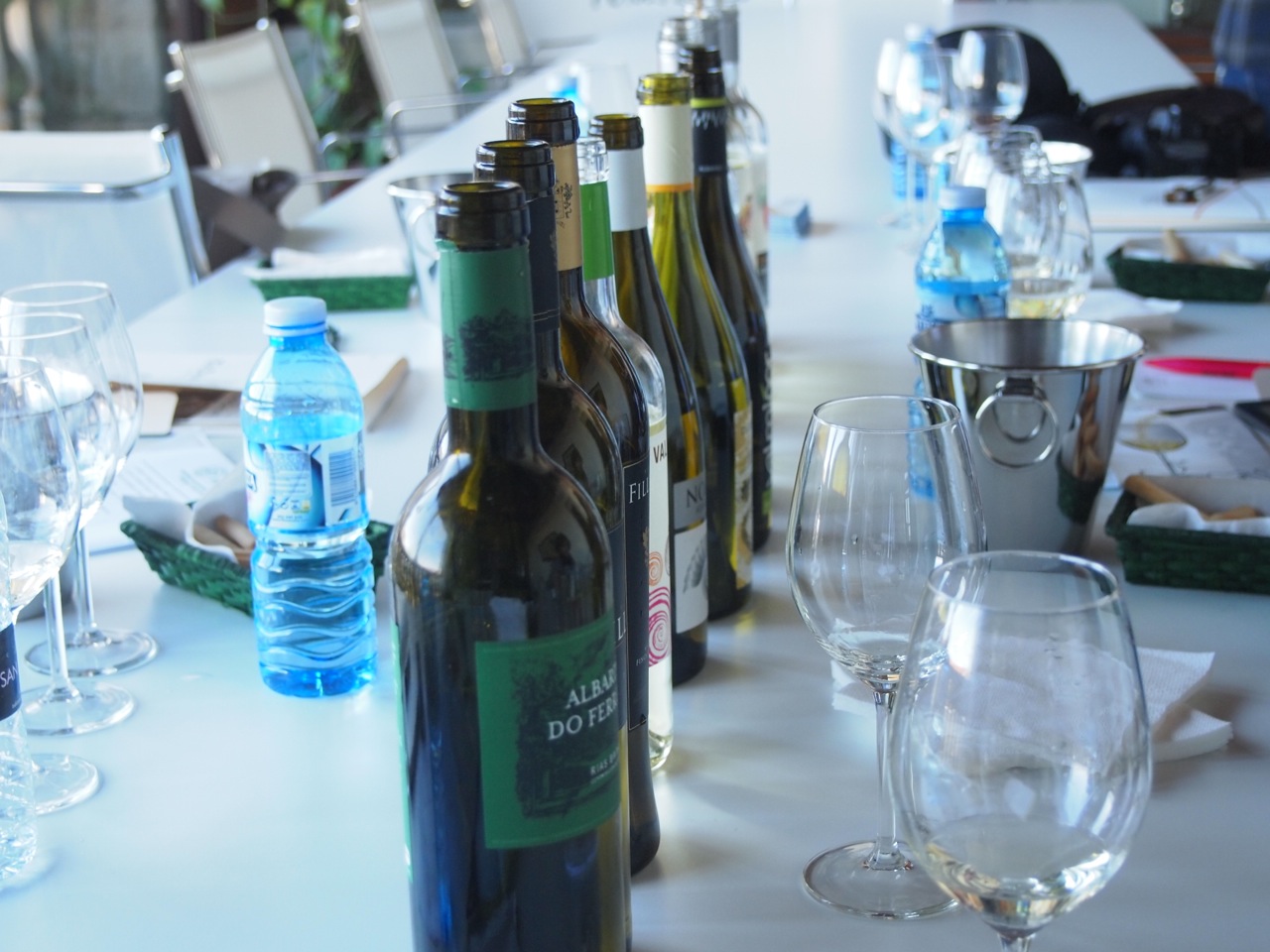
As always, my scoring system is fairly rudimentary and should be taken with a healthy handful of salt. Where I can, I have linked to the wine on Wine Searcher.
A: Recommended. If it fits your preferences, go get ‘em.
AA: You should go out of your way to source these wines.
AAA: Take a loan and buy more!
2011 Gerardo Mendez “Do Ferreiro”, Albariño
Lean and a bit green on the nose. Sharp acidity. Refreshing and light.
2012 Fillaboa Albariño
Glyceric with rich, sweet stonefruit and grapefruit. Fresh acidity.
2010 Fillaboa “Seleccíon Finca Monte Alto” Albariño
A fuller, richer style, although it has mouthwatering acidity as well. Well-made.
2012 Viña Nora “Val de Nora” Albariño A
Light, aromatic and very youthful aromas. Medium-bodied, glyceric palate with great balance.
2012 Viña Nora Albariño A
Concentrated, fruity with good structure based on acidity. Very smooth.
2009 Viña Nora “Nora de Neve”, Albariño
Barrel fermented. Buttery, smooth. Good acidity with lactic hints. I feel this is too influenced by the oak treatment.
2011 Adegas Valmiñor, Albariño A
Subtle, mellow and round. Quite mineral on the finish.
2011 Adegas Valmiñor “Davila”, Albariño, Treixadura, Loureiro
Fresh green apple on the nose, with a floral note that almost resembles dry Muscat. Creamy, rich body.
2012 Adegas Galegas D. Pedro de Soutomaior, Albariño A
The most compelling of the wines from Adegas Galegas tasted here. Very complete Albariño. Young and fresh, but still verging on complex and great balance and body.
Forjas do Sálnes
It was at Forjas do Sálnes that we first encountered the term ”proyectos” (there is probably a proper Galician way to spell that too), which would haunt us for the rest of the trip. Apparently, just having an estate and making wine is not the way to do business here. Every wine is a project, has a purpose and an ending. The division between brands and ”product lines”, for lack of a better wording, is unclear.
Forjas de Sálnes belongs to Rodrigo Méndez, a member of the Méndez family of the Do Ferreiro wines. He started Forjas (meaning forges, which reflects the family’s background as smiths, much like “Do Ferreiro” does) with the intention of only making red wines. His friend, the obiqutous Raúl Perez came along to help him (we will see more of Raul later in this travelogue). Raúl, in turn, wanted to learn more about white wine making in return and in the end convinced Rodrigo to do both at his estate, which is lucky because the white wines tasted here were some of the best of the whole trip.
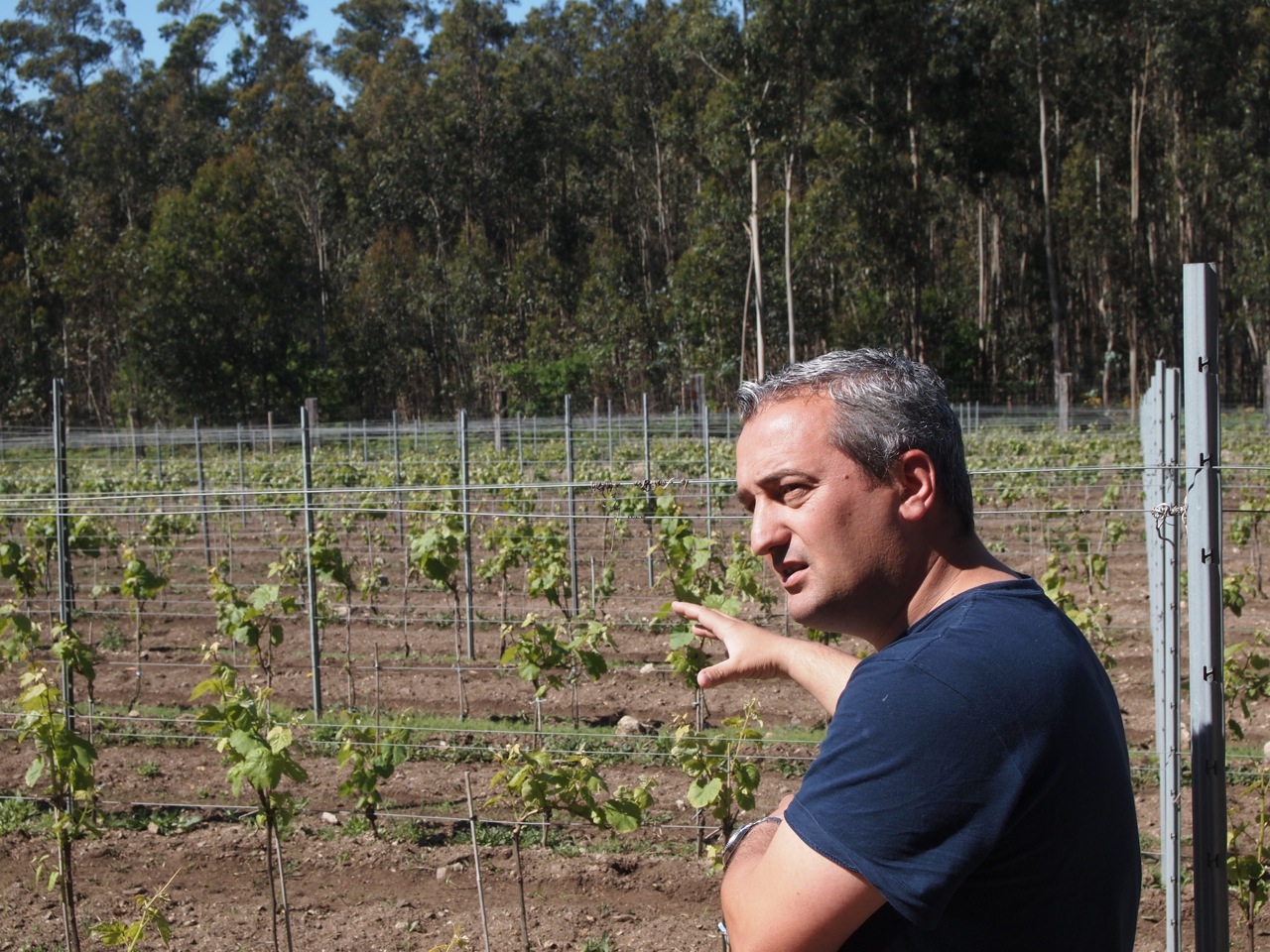
Rodrigo’s priorities became obvious straight away as we followed (or tried to follow, rather) his car into a mountainous, forested area that did not look like anything I had imagined about Rías Baixas. In a small clearing in the eucalyptus and pine-forest, lay his pride: a beautiful vineyard, planted to a plethora of local grapes. Why up here, where no one else had planted vines since roman times? Rodrigo explained that due to the fragmented structure of Galician vineyards, it’s impossible to work organically even if you don’t spray; you have too many neighbors spreading the stuff haphazardly. Up here, he was alone, and could work without chemicals. And on top of that, the altitude, soils and distance to the ocean (just a few hundred meters beyond the woods) would provide exceptional conditions for winegrowing, lessening the impact of fungal diseases. The vineyard is only a few years old and not yet productive, so time will tell what the result is. But it would soon be apparent this man has a nose for finding special vineyards, so you would be a fool not to trust him.
Next up, we drove to the Finca Genoveva, a wonderful little farm owned by an elderly couple. Rodrigo tends the vineyard close to their house and hopes to take it over once they pass as none of their children have an interest in wine. It was here, that he and Raúl Perez found a cache of old bottles of Albariño, up to 30 years old, produced for family consumption in the most traditional way. The bottles where the corks had lasted had apparently been a revelation, as you hear him tell it.

Farmed by three generation of only women, the vineyard holds some parral-trained vines that reached 200 years old, definitely the oldest productive vines I have seen. Pictured below is the oldest vine, Caiño Tinto of well over 200 years of age. The vineyard also has a few vines of Ratiño, which is not allowed in the DO. Rodrigo was unsure if it was the same as the Portuguese Ratinho. The vineyard is sprayed with sulfur four times a year, but other than that there is no intervention, the vineyard has reached an age where it just handles itself.

After this, it was time to rush to the winery, which was definitely not as sexy as the vineyards we had just seen, basically being an oversize garage, way too large for the operation. Almost all of the barrels are old, and apart from some smaller barrels for the reds everything goes either into steel or large foudres, without any lees stirring and no added yeast. Malolactic fermentation is a non-issue as the malic acid is so low to begin with.
The tasting became rushed as we had spent too much time gazing at vines and we did not manage to get through all the reds before having to rush on, but the wines were stellar none the less. They are certainly different from the Rías Baixas most of us know, but amazing, intense and thoughtprovoking wines in their own right. As you can see, I was quite taken with these and if you manage to find them, I cannot recommend them strongly enough. I caught myself thinking about great Chablis when tasting the whites again and again. The reds were more idiosyncratic and left me without parallels, but good they were.
2012 Leirana (BS) A
Albariño. Concentrated, salty and intense. Mineral > Fruit. Will need time to come around fully.
2011 Leirana A
Albariño. Creamier than the 2012, but yet with intense acidity and minerality. Like a great Chablis.
2010 Leirana ”Finca Genoveva” (BS) A
Rich, creamy, full-bodied, green apple like acidity. Ripe stonefruit and cheeserind on the nose. Reminds me of aged Raveneau.
2011 Leirana ”Finca Genoveva” (BS) AA
Albariño. Fresher than the 2010, with more light tones of melon, stonefruits and a powerful mineral kick on the finish.
2011 Goliardo ”A Telleira” (BS) A
Albariño from a seaside vineyard. Three barrels made, one of which becomes the more famous Sketch (LINK) from Raúl Perez. Rodrigo tells us that the vineyard lies ”above the sea” and that the tide actually goes in below the vines. No matter if you believe that roots actually can transfer salt to the finished wine – this is distinctly saline and mineral. Very Riesling-esque in structure, almost austere.
2005 Leirana ”Luisa Lazaro” A
Albariño. The acidity of the 2005 Leirana vintage was so high that Rodrigo decided to hold back the 2005 and was using it to top up barrels. By today, the wine has evolved fully into a deeply colored, mineral and again, very Chablis-like creature. Delicious!
2010 Goliardo Caiño Tinto “Tintos de Mar” A
The only red tasted from bottle and the only one I managed to get a tasting note on, which pains me. The Loureira and Espadeiro tasted from barrel were intriguing, but I have no notes to share. This comes from the old vines mentioned above. It is light, elegant but with an quite powerful structure. The flavor is full of cracked pepper, smoke, dried herbs and blackberries. Intriguing.
Bodegas del Palacio de Fefiñanes
This is the grand old man of the appellation. The winery dates back to 1904 and the brand Albariño de Fefiñanes first adorned a bottle in 1928. I have been a fan of Fefiñanes’ wines for some time and they have featured on almost all my wine lists at one time or another. I had read up on the history of the estate but was in no way prepared for the majestic 16th century palace in Cambados, Sálnes which is their home. The wines of this producer are rather sleek and elegant (some would say austere), and I was expecting a squeaky clean high-tech operation of some size hiding behind those old school labels. I was thoroughly mistaken. Everything is housed behind those thick granite walls, including a lovely spartan garden with some old vines.
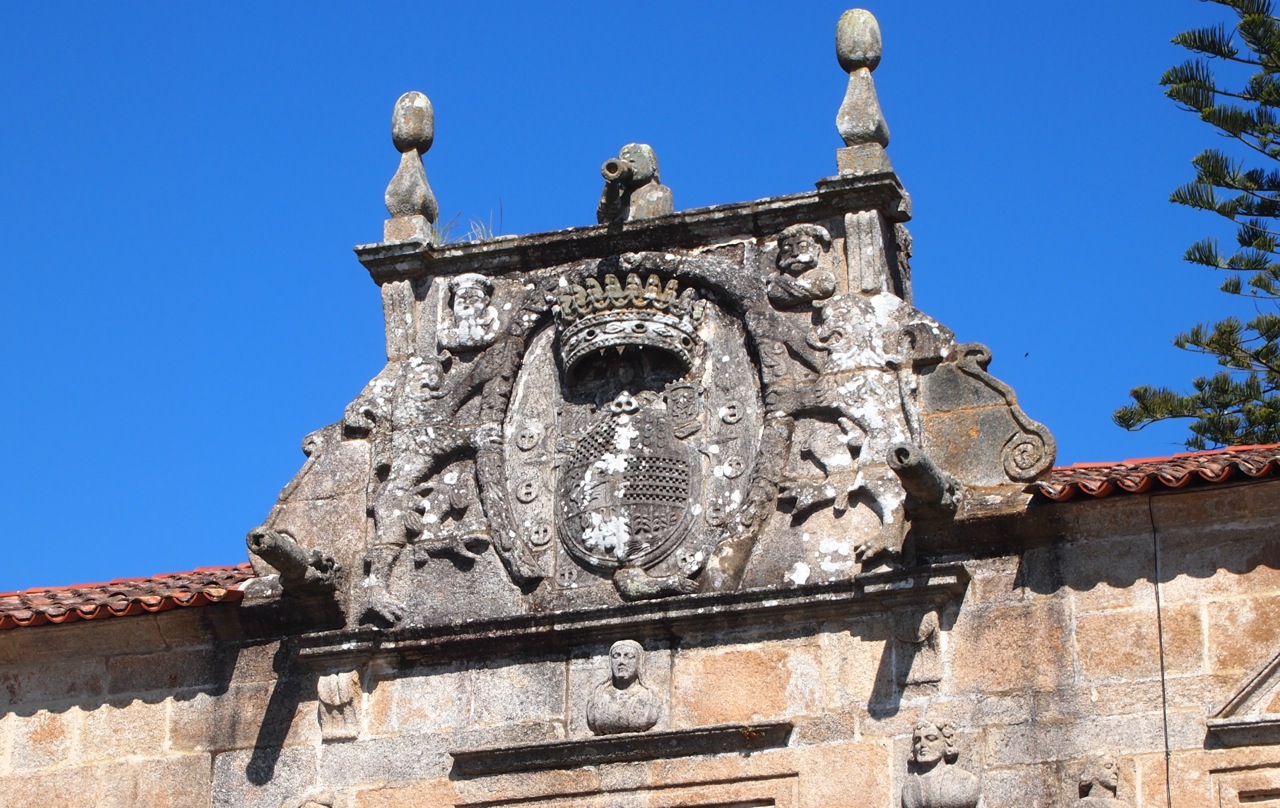
The grapes are sourced from local producers on mostly granitic soils, harvested at low yields and destemmed. The wines are fermented with cultivated indigenous yeasts and there is no malolactic fermentation.
As for these wines, my preference has always been for the standard Albariño, which is usually excellent value. It might be a step up pricewise from the light, fruitdriven styles, but there is also a jump in quality which I find easy to justify. I was pleasantly surprised to see the age worthiness of the wines, especially the III Años.
2012 Albariño de Fefiñanes A
2012 was a vintage of horribly low yields (down 60% in Rías Baixas from a record high in 2011) in almost all of Galicia, but the end results seems to have been quite successful.
Fruit-forward and youthful with primary tones of pear drops, grapefruit and green apple. Rounder on the palate with great acidic kick and freshness.
2009 Albariño de Fefiñanes A
Very intense, fruity with intense minerality and great acidic backbone. A real pleasure at this point.
2008 Albariño de Fefiñanes
More subtle and secondary than the 2009. Doesn’t have the same kind of sparkle and is much richer and full-bodied.
2010 ”III Año” Albariño
Aged for three years on its lees in stainless steel.
Ripe nose with stonefruits and orange zest. Creamy and full-bodied. The high acidity becomes appararent first in the aftertaste.
2007 ”III Año” Albariño A
Light yellow. Slightly evolved nose with white flowers and stonefruit, like white Bordeaux in a way. Soft, round but with well integrated high acidity. Makes the case perfecly for aging high end Albariño in the mid term.
2004 ”III Año” Albariño
Evolved color and nose full of nutty tones. Great structure and full of life although the fruit character is no longer dominant. An intellectual pleasure.
2011 ”1583” Albariño
Named after the birth year of the Vicount Fefiñanes, who built the palace. It spends six months in old french barrel with regular bâttonage.
Buttery, smoky nose with pink sweet grapefruit, juicy pear and melon. The palate is finely balanced with fresh acidity and smoothness. Well made, although I do prefer the style of the regular bottling.
2007 ”1583” Albariño
Opulent, toasty nose. Still has lots of fruit but the whole thing feels less well integrated. There is actually a disctinct oakiness here. Doesn’t have the liveliness like the 2007 III Año does and the acidity, although precent feels disjointed.
Pazo de Señorans
Pazo de Señorans started making wine in 1989, but the beautiful countryside manor dates back to the 16th century. Although it doesn’t have the extensive history of other producers, many would probably list this at the very top of the quality hierarchy in Rías Baixas.
We were greeted and shown around by the all-female trio at the head of the bodega; charismatic owner Marisol Bueno Berrío-Ategortua (who is also the former president of the appellations regulating agency and credited with much of its popularity in the 1990s), daughter Vicky and oenologist Ana Quintela. The pazo really feels saturated with history. Amongst other things, it houses a secret chamber where the last king of Portugal is said to have hidden when he went into exile.
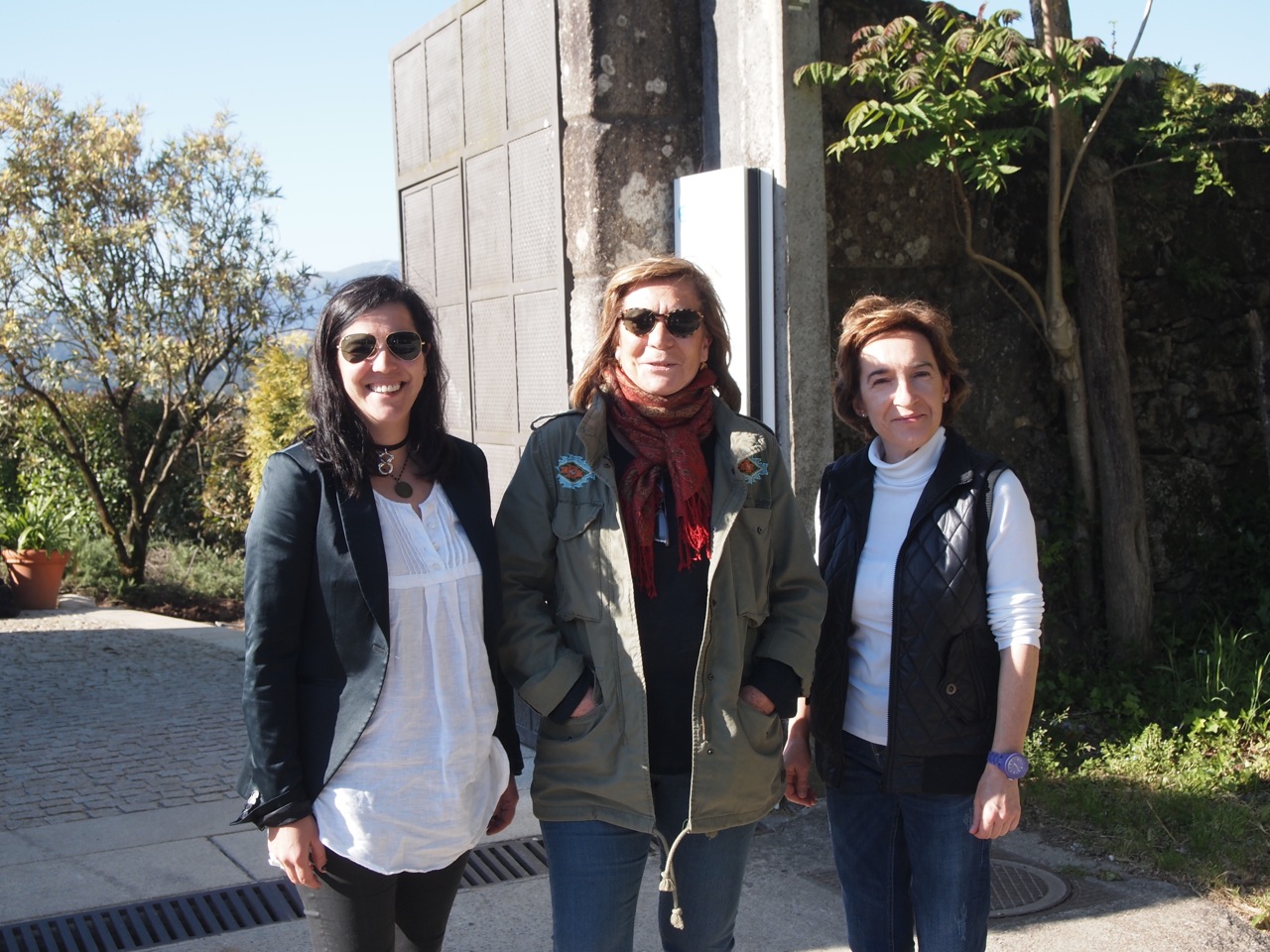
The estate focuses solely on Albariño and makes only two wines (there has been an oak-aged wine called Sol de Señorans released in the past as an experiment. I am unsure if this is still made), both fermented aged in stainless steel. There is also some excellent Orujo and Orujo de Hierbas, destilled on the property. The focus is on ripe, healthy grapes and generally the wines have more fruit and depth to them than what is typical in the appellation. The Seleccíon de Añada is only made in the best vintages. The grapes come from fairly old (45+ years) vines and is aged for 30+ months on its lees in stainless steel and 12 months in bottle. It is definitely one of the benchmark wines of Rías Baixas, and consistently one of the most lauded wines of Spain.
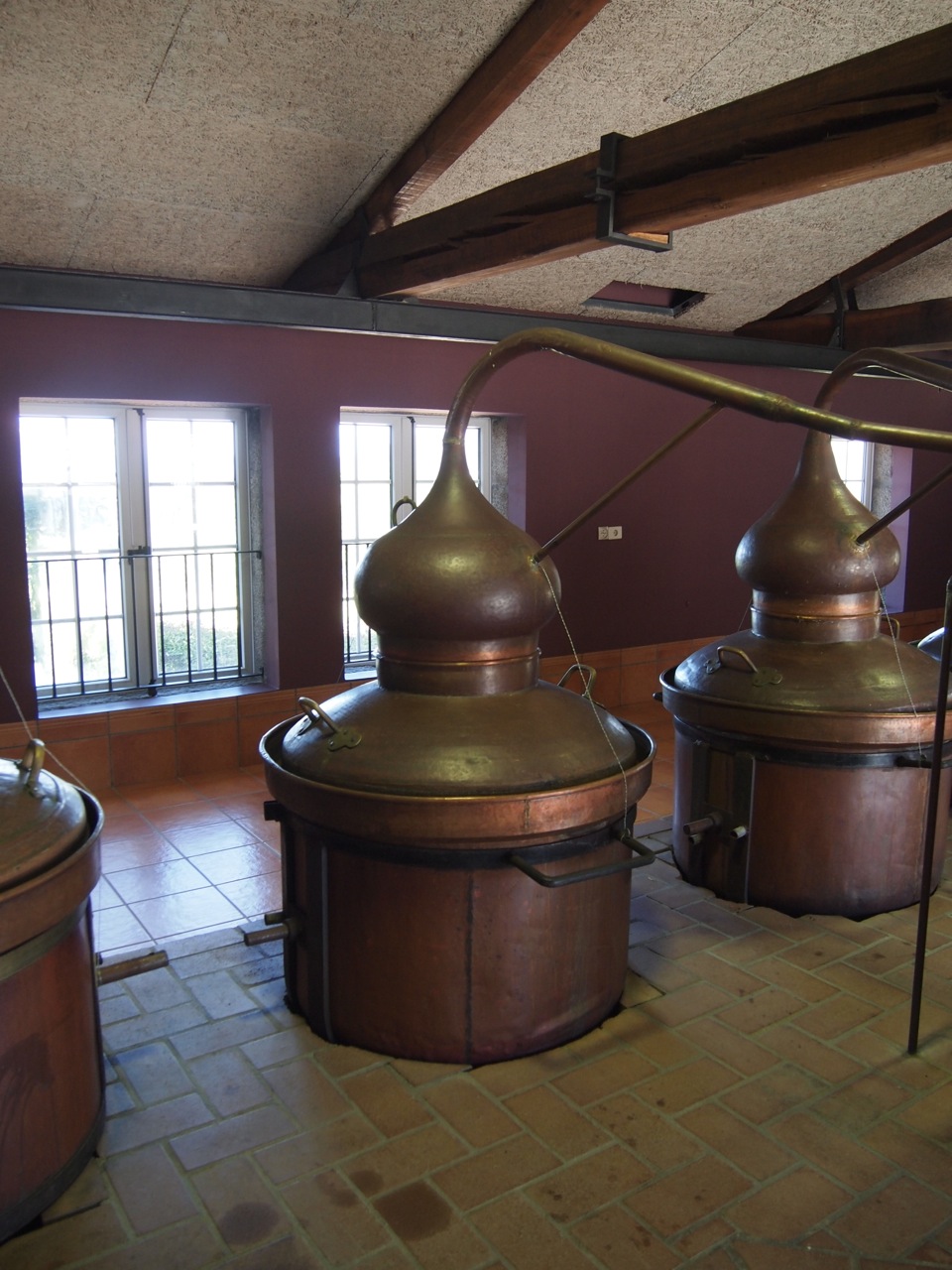
2012 Pazo de Señorans Albariño A
Soft and creamy with young, primary fruit and a lovely floral note. Round mouthfeel with ripe stonefruit character and high glycerol content – feels sweet, but there is very little residual sugar.
2009 Pazo de Señorans Albariño A
Subtle and slightly evolved fruit notes with that fine floral note coming through again. Has the same smooth and rich mouthfeel. Wonderful at this age.
2006 Pazo de Señorans Seleccíon de Añada A
Current release of this icon. Quite pale and youthful looking. Ripe, almost tropical fruits on the nose. The palate is more taut with a backbone of serious acidity, and the hallmark creaminess from the lees.
2005 Pazo de Señorans Seleccíon de Añada A
Again very rich fruit on the nose; mango and passionfruit. Fantastic structure on the palate, and the acidity is mouthwatering on the finish. Flavours of orange zest, peach and apricot. Very compelling, a real pleaser.
Finishing thoughts
Albariño is definitely the star of the show here, but it is obvious that Rias Baixas doesn’t have to be a one trick pony. Let us hope that the Galicians are wise enough to use Albariño as a wedge to get into markets and then introduce the other fine wines as well. At this point however, it seems more like the local Consejo Regulador is trying to obscure the fact that Rias Baixas can mean something else than clean, crisp, easy-to-drink white wines.




